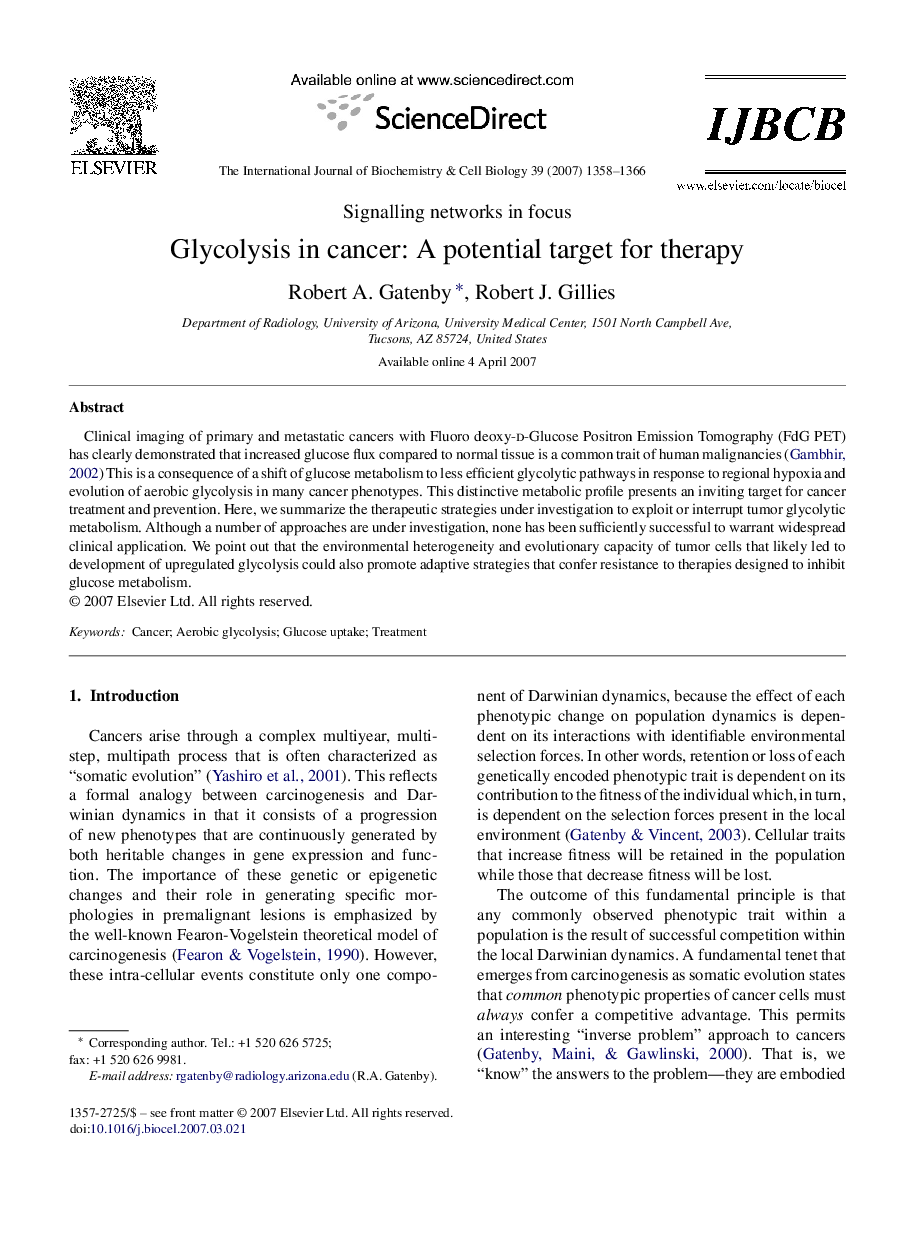| Article ID | Journal | Published Year | Pages | File Type |
|---|---|---|---|---|
| 1984329 | The International Journal of Biochemistry & Cell Biology | 2007 | 9 Pages |
Clinical imaging of primary and metastatic cancers with Fluoro deoxy-d-Glucose Positron Emission Tomography (FdG PET) has clearly demonstrated that increased glucose flux compared to normal tissue is a common trait of human malignancies (Gambhir, 2002) This is a consequence of a shift of glucose metabolism to less efficient glycolytic pathways in response to regional hypoxia and evolution of aerobic glycolysis in many cancer phenotypes. This distinctive metabolic profile presents an inviting target for cancer treatment and prevention. Here, we summarize the therapeutic strategies under investigation to exploit or interrupt tumor glycolytic metabolism. Although a number of approaches are under investigation, none has been sufficiently successful to warrant widespread clinical application. We point out that the environmental heterogeneity and evolutionary capacity of tumor cells that likely led to development of upregulated glycolysis could also promote adaptive strategies that confer resistance to therapies designed to inhibit glucose metabolism.
